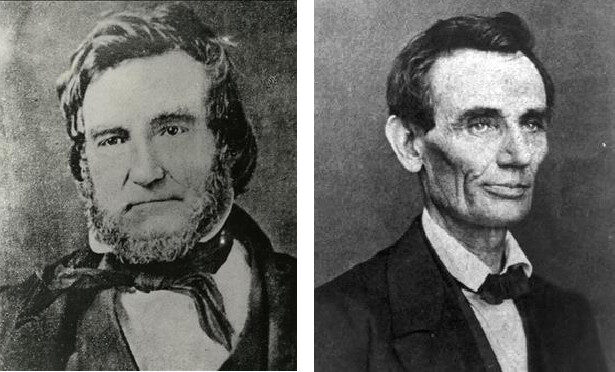Staying Healthy at 35,000 Feet
If you are planning on flying and debating whether to wear a mask, it is best to know the facts. Infectious disease expert Dr. Clark Abraham, who is with the New York Institute of Technology College of Osteopathic Medicine, said some people may be surprised about the risk of germ spread on most airplanes.
“Commercial airplanes contain high efficiency particulate air (HEPA) filter systems, which exchange the air rapidly. In general, the risk of spreading an airborne pathogen is lower in an airplane than other indoor, public settings,” said Dr. Abraham. “However, some studies suggest that sitting within two rows of an infected passenger does increase the risk of acquiring an airborne infection.”
Abraham urges anyone with a possible respiratory tract infection to wear an N95 mask, as well as those with compromised immune systems. “Disinfecting touched objects, like seatbelts or trays, won’t hurt, although airlines are supposed to make sure areas are cleaned thoroughly between flights,” said Dr. Abraham.
The real hotspot might be the airplane lavatory. Here, transmission can occur either by coming into contact with surfaces contaminated by bacteria or by inhaling air contaminated with certain viruses, such as influenza or COVID, after being used by a contagious passenger. Transmission of norovirus, the common cause of diarrheal outbreaks on cruise ships, has also been reported.
“In general, the surfaces of public restrooms are frequently contaminated with fecal flora, bacteria found in stool. Airplane restrooms that are shared between passengers are no exception,” said Dr. Abraham. “Although airlines clean the lavatory between flights, their use during the flight results in contamination of the toilet, sink handles, door handles—inside and outside, and especially the floors. Bacteria from the bathroom can also track into the cabin on the bottom of our shoes.”
To avoid coming into contact with these germs, he advises passengers to open and close lavatory door handles with a sanitizing wipe, use toilet seat covers, and close the lid before flushing.
Hidden Health Benefits with Prostate Medicines
Certain drugs used to treat urinary symptoms due to an enlarged prostate may be associated with a reduced risk of dementia with Lewy bodies, according to a new study. Dementia with Lewy bodies is a progressive neurodegenerative disorder that can cause memory and thinking issues, movement problems, and issues such as hallucinations.
The study does not prove that these drugs reduce the risk of dementia with Lewy bodies. However, it shows an association. “These results are exciting because right now there are no drugs to prevent or treat dementia with Lewy bodies, which is the second most common neurodegenerative type of dementia after Alzheimer’s disease,” said study author Jacob E. Simmering with the University of Iowa in Iowa City. “If we can determine that an existing drug can offer protection against this debilitating disease, that has the potential to greatly reduce its effects.”
The study looked at men taking different types of drugs to treat urinary problems caused by an enlarged prostate, a common problem for older men. The drugs terazosin, doxazosin and alfuzosin appear to block brain cell death by activating an enzyme important for energy production in brain
cells. Previous studies have shown a similar association between these drugs and Parkinson’s disease, which is similar to dementia with Lewy bodies.
Once researchers matched the groups by age and other factors, they found that men taking terazosin, doxazosin or alfuzosin were 40% less likely to develop dementia with Lewy bodies than men taking tamsulosin. “More research is needed to follow people over time and determine whether there is a cause-and-effect relationship here, but it is promising to think that these drugs could have a protective effect on this disease that will likely affect a larger number of people as the population ages,” said Simmering.
Honeybees Help Diagnose Lung Cancers
Michigan State University (MSU) researchers are reporting that honeybees can detect biomarkers or chemical concentrations associated with lung cancer in human breath. The researchers have shown that honeybees can distinguish between different lung cancer cell types using only the ‘smell’ of the cell cultures. These findings could be used as a model for developing new tests to diagnose lung cancer early.
“Insects have an amazing sense of smell, the same way dogs do,” said study investigator Debajit Saha, an assistant professor at MSU. The researchers wanted to see if honeybees could distinguish between the chemicals in human breath from someone who was healthy compared to someone with lung cancer. Study investigator Elyssa Cox and her team developed a “recipe” for a synthetic breath mixture using different levels of six compounds. “It took a steady hand to create the recipe,” said Cox. “We tested the synthetic lung cancer versus healthy human breath mixtures on approximately 20 bees.”
Cox helped design a custom 3D-printed harness to hold a live honeybee while she attached a tiny electrode to its brain to measure any changes in the bee’s brain signals.“We pass those odors on to the antenna of the honeybees and recorded the neural signals from their brain,” said Saha. “We see a change in the honeybee’s neural firing response.”
The researchers also wanted to measure how much of the cancer-indicating compounds needed to be present in someone’s breath for the honeybee to detect cancer. “The honeybees detected very small concentrations. It was a very strong result,” said Saha. “Bees can differentiate between minute changes in the chemical concentrations of the breath mixture, which is in the parts per 1 billion range.”
Saha hopes this work will open the door for more biological and smell-based disease detection technologies. In the future, Saha’s team plans to develop a test based on honeybee brains that would analyze the breath and wirelessly report back in real-time if cancer chemicals are present.

John Schieszer is an award-winning national journalist and radio and podcast broadcaster of The Medical Minute. He can be reached at medicalminutes@gmail.com

















